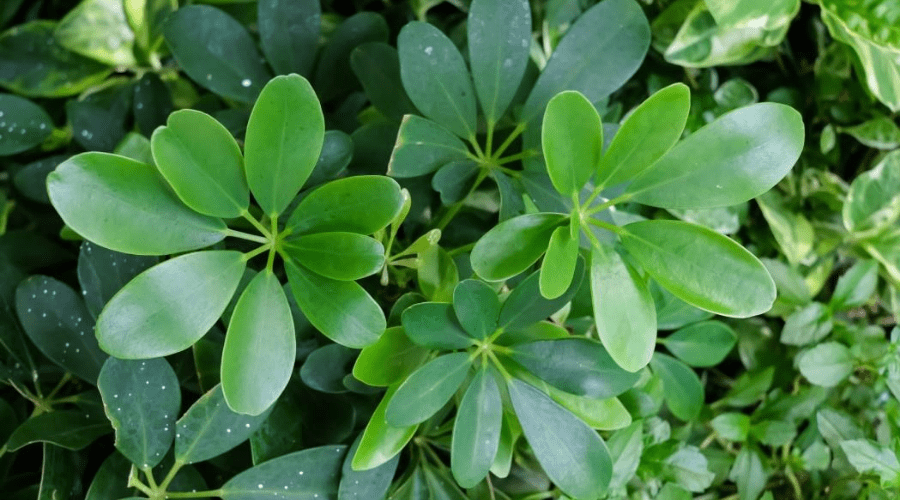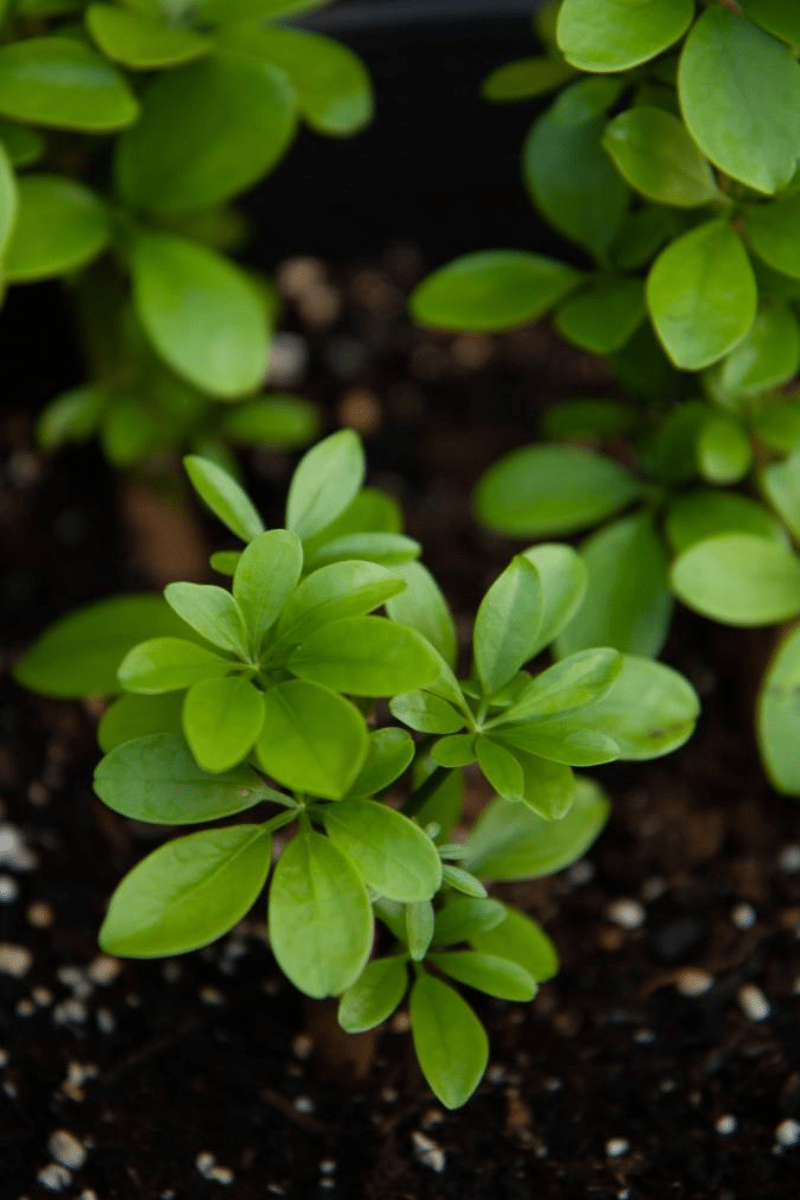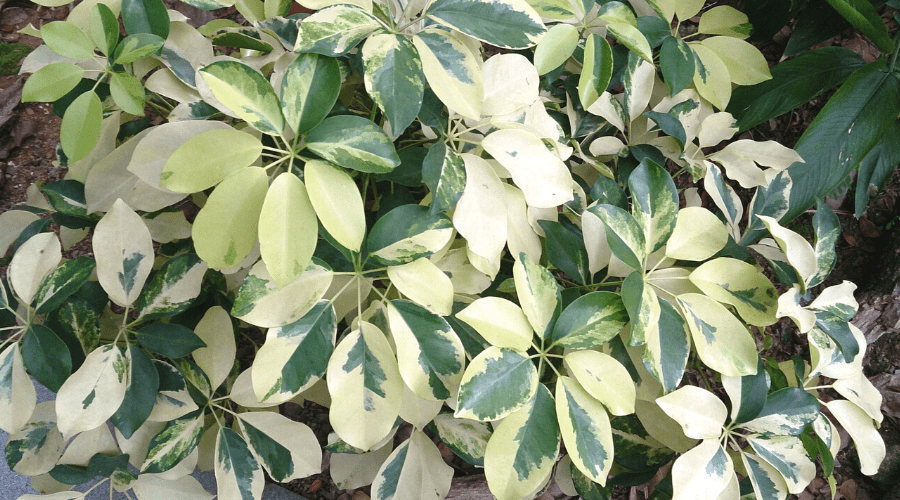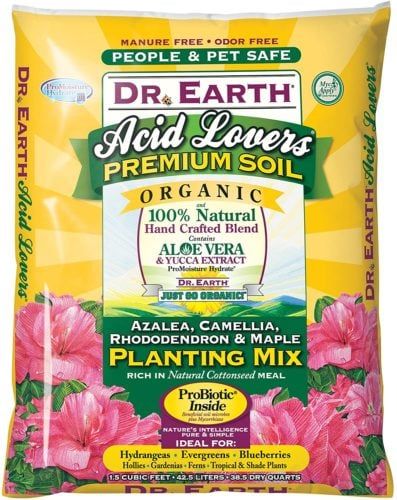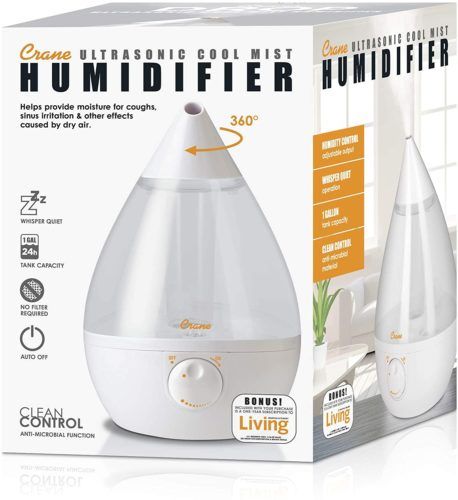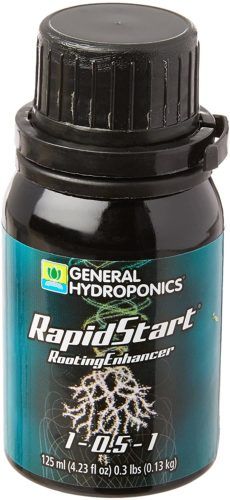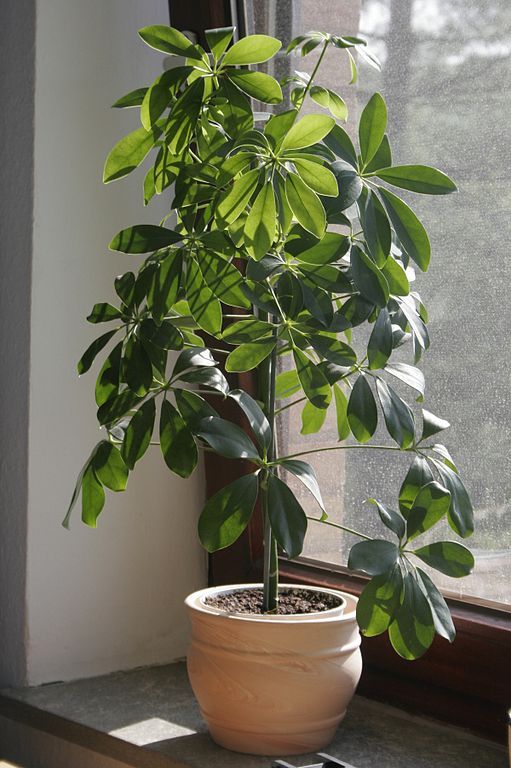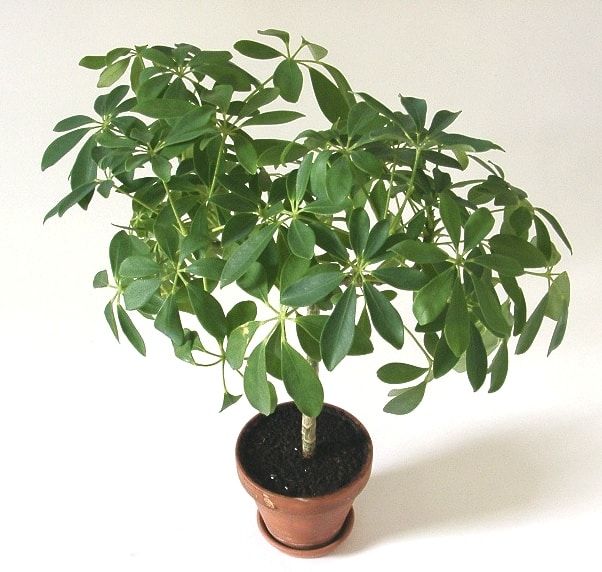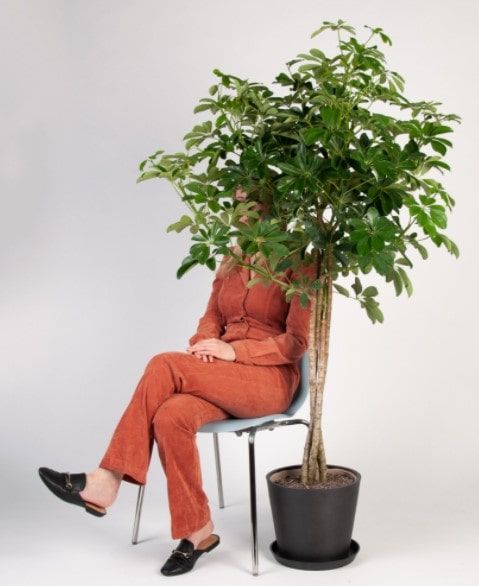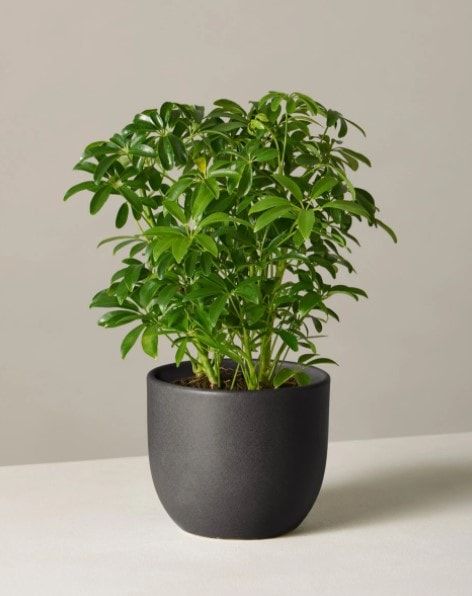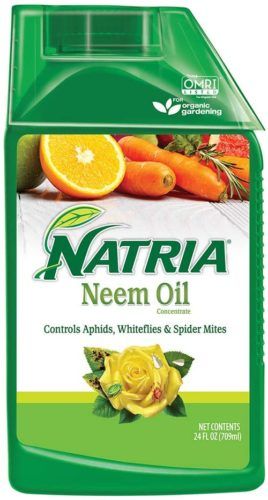BY HELEN LEWIS AND DANI GALLAGHER
The umbrella tree is an indoor tree that looks great in most homes. Schefflera plants are known for their gorgeous foliage, resilience, and easy care. It’s no wonder that they are one of the most popular house plants. A lot of varieties fall under the Schefflera family, including umbrella trees, which have a stunning, tropical look and unusual leaf shapes. This guide includes everything you need to know about how to grow schefflera plants, with detailed care instructions, pro tips, and helpful buying information.
Umbrella Tree Details
Schefflera spp.
AKA umbrella plant, parasol plant, Australian ivy palm, octopus tree, starleaf
Ease of Care: Easy
Light: Bright, indirect light
Water: Moderate
Temperature: 59 to 70 degrees
Height: Up to eight feet, but usually 1-3 feet indoors
Growth Rate: Moderate
Pests: Spider mites, mealybugs and aphids
Disease: Root rot
Toxicity: Toxic to humans and animals
Benefits of Growing Umbrella Trees
There are several benefits to growing an umbrella tree. Also known as a parasol tree or octopus tree, this plant comes with all of the following benefits:
Credit: TWENTY20
Umbrella Trees Improve Air Quality
Schefflera plants purify the air in your home, filtering out pollutants like benzene, formaldehyde, and toluene from the air. They are particularly good at removing toxins released into the air as a result of cigarette smoke. After taking in gases in your home through their leaves and roots, schefflera plants filter them out and then release clean oxygen into the air. Having more oxygen enables bodily functions like sleep and mental functions like memory.
Shefflera Plants are Versatile
Because this plant is available in several varieties, it's extremely versatile. You can also grow it tall, or keep it small and low to the ground. Whether you want it to be the focal point of your room or a small accent, this plant can get the job done.
Houseplants Improve Your Health
If you're a believer in Chinese medicine, you'll love having this tree around. In traditional Chinese medicine, the octopus plant is used for healing. By using the stem, roots, and leaves in herbal preparations, the Chinese created a healing drink. They believed that the mixture could circulate blood better and relieve pain. If you're not adventurous enough to try it yourself, you can still enjoy the aesthetic value of the plant.
Schefflera plants don’t just improve your physical health, they also can help your mental health, brightening up interior spaces with their gorgeous green foliage, and improving your mood when you successfully care for them by giving you a sense of accomplishment.
Umbrella Tree Care
If you're not an expert gardener, you don't need to fret. The octopus plant is an excellent choice because it is relatively easy to care for.
Light
This plant does not like direct sun, but it does need bright light. Before you pick a spot for your umbrella plant, consider the lighting situation. If you want your plant to be tree-like and tall, you need to make sure it has enough light. Too much direct light will scorch the leaves.
That said, Schefflera can handle low light environments. It won't die in dim rooms of your home, but it will appear leggy and grow at a slower rate. You can move your plant outside to a shady spot in the summer. Variegated varieties are less efficient photosynthesizers and should always bee given more light than a standard green variety.
Credit: TWENTY20
Wherever you choose to grow this plant, you should rotate the plant every couple of weeks. If you don't, the plant will lean towards the source of light and the back side will grow sparse.
Water
Originally from a moist environment, the umbrella tree needs to be watered regularly. It is forgiving in the sense that you can forget to water the plant for a week or two, and the plant will be fine. The real issue comes from overwatering your parasol plant. If it gets too much water, the plant could develop root or stem rot.
To correctly water your schefflera plant, wait until the soil in your plant’s pot has fully dried out. Then, thoroughly soak it, taking care to really douse the plant but not leave any standing water behind on its soil.
Credit: TWENTY20
Container & Soil
Your umbrella plant’s soil should be well-draining, sandy, and slightly acidic. You can add an acidifying agent to a standard potting mix, or begin with a mix designed for acid-loving plants.
Dr. Earth Acid Lovers Planting Mix
Rich in nutritious cottonseed meal and a plethora of other organic nutrients. Ideal for hydrangeas, evergreens, blueberries, hollies, gardenias, ferns, tropical and shade plants, camellias, rhododendrons, azaleas, maples, and every acid loving plant in your garden.
To help with draining, your container should have adequate drainage holes. If your container does not have drainage holes at the base, you can either drill or punch some yourself, or place an inch or two of rocks at the base before planting your Schefflera.
Fertilizer
During the growing season, umbrella trees need regular feeding. You can use a general fertilizer to nourish your plant. During the growing season, apply the fertilizer once every two or three weeks. Once the cold weather comes around, stop fertilizing the plant. It will be inactive in the cold and the fertilizer could do more harm than good.
Temperature & Humidity
The umbrella tree thrives in temperatures that range between 60 and 75 degrees. If you have a green variety of umbrella plant, it prefers being in an environment that's in the 60s, but variegated ones prefer warmer temperatures. No matter what type of parasol plant you have, the leaves will fall off if the temperature gets too cold.
You should also consider misting this plant. If the humidity in your home isn't high enough, you could find pests on your plant. Red spider mites and scale tend to take over when there's not enough moisture in the air. You can provide it with humidity by either misting it each week, putting it on a humidity tray, or placing a humidifier near it.
Crane Drop Ultrasonic Cool Mist Humidifier
Our Classic Drop humidifier is designed with a removable mist lid that you can adjust to send the mist in any direction. The teardrop design is also aesthetic, effective, and perfect for putting anywhere in the room. One gallon capacity with 24-hour run time and easy-to-clean filterless design.
Repotting
This houseplant grows well in a small pot. However, it needs to go in a new pot once every year or two. This is true even after the plant matures. To slow your tree's rate of growth, you can extend the repotting window up to three years. However, if the container becomes too crowded to the point that the roots are visibly overgrown, for the plant’s health you should repot.
Remove it from its old container and gently untangle its roots. This can be a tough job, especially if the roots have become too convoluted, in which case you can place the root ball in a bucket of water to rinse away any remaining soil and assist with untangling.
Feel free to prune roots that have become too long, especially if you don’t think the untangled roots will be able to fit in their new pot. Then, plant your Schefflera in a new pot with new potting soil that is chock-full of nutrients.
Propagation
Schefflera plants are fairly easy to propagate from cuttings as long as you know what you are doing. Which, thanks to this helpful guide, you do. Below are two propagation strategies for making a new umbrella tree.
Leaf Cuttings
Your best chance at propagation is to cut off the growing tips in the spring. This is the most popular method for propagating schefflera plants.
Using a clean, sharp knife cut off a piece of stem near the plant’s base and wrap it in a moist paper towel.
Then cut each leaf in half horizontally. This will help the cutting cope with the amount of moisture it loses while rooting.
This is not one of those plants where the use of rooting hormone is optional. Without it, you will have a very high failure rate on rooting your cuttings.
General Hydroponics RapidStart Rooting Enhancer
Rapid Start enhances your growing experience by delivering a powerful blend of premium plant extracts, amino acids & nutrients generating explosive root growth. Using rapid Start stimulates prolific root branching & development of fine root hairs that increase nutrient uptake & grow healthier, whiter roots.
Fill small pots, around 4 to 6 inches wide, with potting soil. Poke a hole in the middle of each and place your cuttings, which should be brushed with rooting hormone at this point, in them. Secure the cuttings in the soil and place them in a spot with bright, direct sunlight.
Keep the soil moist and consider placing a bag over the cuttings to trap in humidity, or running a humidifier in the room. In a few weeks, your cutting should begin to root.
Layering
You can also propagate your schefflera by using a technique called “layering." Layering involves creating new roots along the plant’s stem while it is still attached to the parent plant.
Remove the bark around the end of a piece of stem, below the leaves. It’s important that the piece is flexible because you are going to need it to bend it downwards, into the soil of a planter nearby.
Bury the part you cut, but leave the leafy end of the plant above the soil. It’s a good idea to use a piece of wire to hold the stem in place so it does not flip up.
Keep the soil around the bark moist, and in a few weeks, roots will form. When new growth pops up, clip it away from the original tree and proceed as above.
Pruning
If your schefflera plant becomes too leggy, has outgrown its pot, or is flopping over, it’s pruning time! As your umbrella plant grows, you can prune it to your desired shape. If you don't want the plant to grow tall, you can prune it frequently.
There are ways of pruning your plant that encourage it to grow outward. When you make the cut, do so about an inch above a leaf. Instead of growing up, the plant should branch out to the side.
Using a pair of sharp, clean pruners cut off dead or dying parts of the plant and parts that have become too overgrown and leggy.
If you want to trim your Schefflera, cut an inch off of the plant’s tallest stalk, above where the next leaf is attached.
If your plant has become too leggy, you can cut up to 5 inches off of branches and the plant’s main stem.
Credit: Manuel Rodriguez CC0 public domain.
Feel free to cut back a lot, umbrella plants rebound quickly from pruning. It may feel drastic at the time, but trust me, your plant will bounce back quickly, and look notably fuller and lusher.
Varieties of Shefflera Plant
To start off, decide if you want an all green plant or one with variegated leaves. The green ones deal better with low light and low temperatures. Meanwhile, the variegated types are more fickle. They also tend to grow shorter than the green varieties.
There are two main varieties of schefflera plants, schefflera actinophylla (right) and schefflera arboricola.
Schefflera Actinophylla
This is the most common schefflera variety. It has oval-shaped glossy leaves that can grow to up to 10 inches long. These plants tend to grow into full-blown trees that can reach as high as 15 feet tall when grown outside. When planted in pots, they tend to have a bushier look to them.
Credit: CC3.0 via Chrizz on sv.wikipedia
This is the fastest-growing Schefflera variety. How fast? So fast that in tropical and subtropical regions it’s classified as invasive because of its uncontrollable growth.
Schefflera Arboricola
Arboricola is the little brother of S. actinophylla trees. They are much smaller, sprouting leaves that only grow to be 1-4 inches long. These trees tend to have a bushier look with leaves that grow in tight clusters. There are a few cultivars, including all-green and unusual variegated patterns of cream and bright green.
These dwarf plants make excellent house plants because of their compact size and easy care requirements. They also look beautiful, adding an accent of gorgeous greenery to interior spaces.
Where to Buy an Umbrella Tree
This plant is relatively common in homes, and even more common in yards. If you go to any plant or garden center, you should be able to find one or more varieties of umbrella trees.
An excellent online option is Bloomscape’s Potted Schefflera Arboricola. This fun house plant features leaves in an umbrella-shaped formation and a braided trunk. It’s around 4 feet tall when shipped, but because of its slow-growth rate, can easily fit in compact spaces. It’s shipped carefully in an 11.8-inch Ecopot, with premium potting soil.
Mature Schefflera Arboricola in Custom Ecopot
Unlike buying a plant from a box store, your Bloomscape plant arrives fully-grown as pictured and pre-potted. We’ve spent a lot of time selecting pots that have optimal drainage, look great, and come with a saucer so your floor or desk won’t get ruined. All you have to do is unpack your plant and find the perfect spot for it in your home.
Another excellent online option is The Sill’s Schefflera. This umbrella plant has a bushy shape, and beautiful, glossy, bright-green leaves. It is shipped with care in a custom planter you get to pick out.
Small Schefflera in Custom Planter
This low maintenance plant is nicknamed the umbrella tree because of the attractive arrangement of its leaflets. Bushy in shape, this lively plant is a no-brainer for any room in your home. We try our best to match what you see in the picture, but some leaves might have slight variegation.
Umbrella Tree FAQ
Still unsure about schefflera plants? Check out the answers below to the most common umbrella tree growing questions.
What is the Growth Rate of Schefflera?
Credit: Yercaud-elango CC4.0I
Schefflera plants aren’t particularly fast growers when grown as house plants, however, they grow fast and tall when planted outside. A schefflera that’s grown outside in a warm climate typically grows to be 10 to 15 feet tall.
Healthy schefflera plants can grow as much as 3 feet a year. Of course, the dwarf varieties will grow to be far shorter and grow much slower.
Why are My Plant's Leaves Yellow?
If your plant starts to have yellow leaves, you should take action. Your plant isn't receiving enough water.
Be cautious about overcompensating. When it has too much water, this plant will lose its leaves and new growth will turn black. To keep your plant healthy, come up with a watering schedule that keeps the soil moist but not soaked.
Can I Get Seeds from My Plant?
If you have a Schefflera actinophylla, you can get seeds from it. Simply wait for the berries or pods to get dark. Once they do, let the pods dry out in the sun. Place the pods in water and rub them to get seeds.
After the seeds are released, you need to dry them out. Then, you can plant them. It's worth noting that the Schefflera arboricola also has seeds. Instead of waiting for the berries to turn dark, you should wait for them to turn red.
How Do I Keep my Umbrella Tree Disease-Free?
The most common disease that schefflera plants suffer from is root rot. To avoid your plant getting root rot, do not, do not, DO NOT overwater it! I cannot repeat this enough. Root rot can easily kill your precious plant.
Let it fully dry out between waterings, and when you do water it make sure that the water effectively drains through the soil. There should be no standing water left behind.
How Can I Keep My Plant Free of Pests?
There are many pests that will enjoy living on your plant. For instance, mealy bugs, aphids, and spider mites all may be attracted to your plant. If you want to check for pests, simply look at the leaves of your plant.
One easy way to prevent pests is to keep humidity in your home high. If that doesn't work, you can use neem oil to repel pests. Aphids are particularly averse to the oil, as they die when coated in it.
Natria Organic Neem Oil Concentrate
Just one application kills destructive insects like Aphids, Spider Mites, Whiteflies and other listed pests. Makes 24 gallons of spray solution.
What's This Sticky Secretion on My Plant?
Aphids leave behind a sticky secretion that appears in patches. Typically, mold likes to form on the secretions. While the mold itself won't harm your plant, it keeps light from getting to the leaves.
Fortunately, this mold is easy to get rid of. Take a wet rag and use it to wipe the mold off. Of course, getting rid of the aphids will eliminate this problem.
Credit: Forest & Kim Starr CC3.0
Why are There Spots on My Plant's Leaves?
Over time, you might notice spots on your plant's leaves. More often than not, this is a result of wet soil or leaves. A bacterial disease, this can be fixed by pruning off the leaves that have spots and fertilizing the plant.
Conclusion
Schefflera is one of the best indoor trees that you can grow. It’s an absolutely delightful tropical plant, that has numerous house health benefits, and easy-to-follow care requirements. If you want to add some greenery to indoor spaces in your home, be sure to get an umbrella tree.
I hope you enjoyed this guide! If you did, be sure to share it and comment below with any schefflera growing questions!

